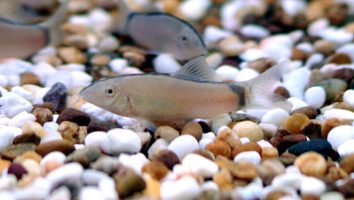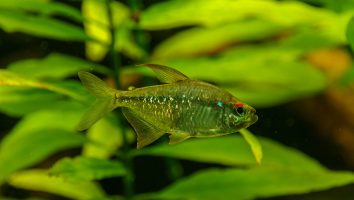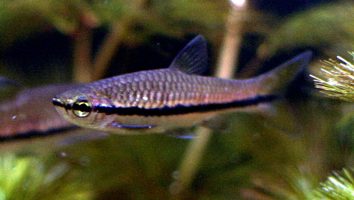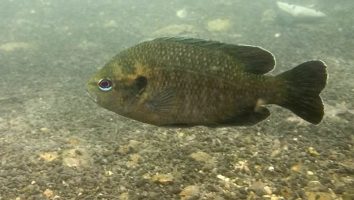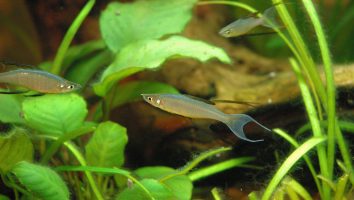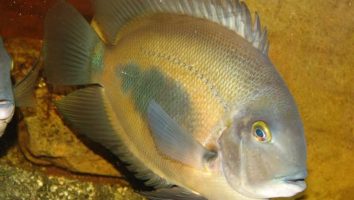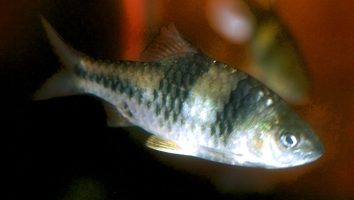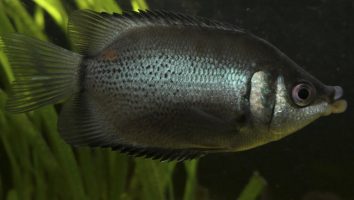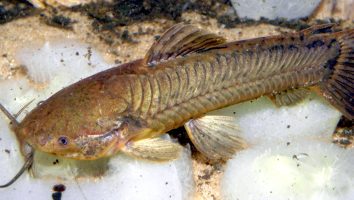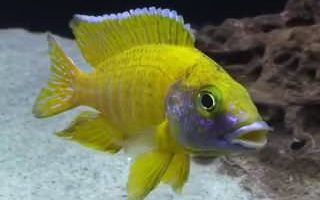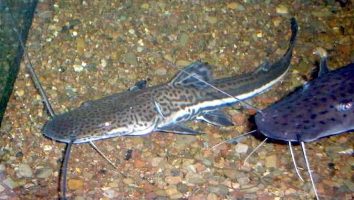The Dwarf Gourami is a beautiful little freshwater fish that is perfect for beginner aquarists. They’re easy to care for, don’t need a lot of space, and are very peaceful.
In this guide, we’ll teach you everything you need to know about Dwarf Gourami care. You’ll learn about their diet, tank size, lifespan, and more!
Table of contents
Species overview
The dwarf gourami (scientific name: Trichogaster lalius) is a type of gourami that’s native to various parts of South Asia, specifically India, Bangladesh, and Nepal.
They prefer slow-moving waters that are heavily planted with a lot of vegetation. This is something common to many species of gourami (such as the paradise fish).
The dwarf gourami is a popular choice for many aquarium enthusiasts because of its bright coloration and peaceful demeanor. They are also relatively easy to care for, which makes them a good choice for beginner fishkeepers.
One thing to keep in mind with dwarf gouramis is that they are known to be susceptible to a disease called dwarf gourami iridovirus (DGIV). This is a viral infection that has no known cure and can be deadly to dwarf gouramis.
Appearance
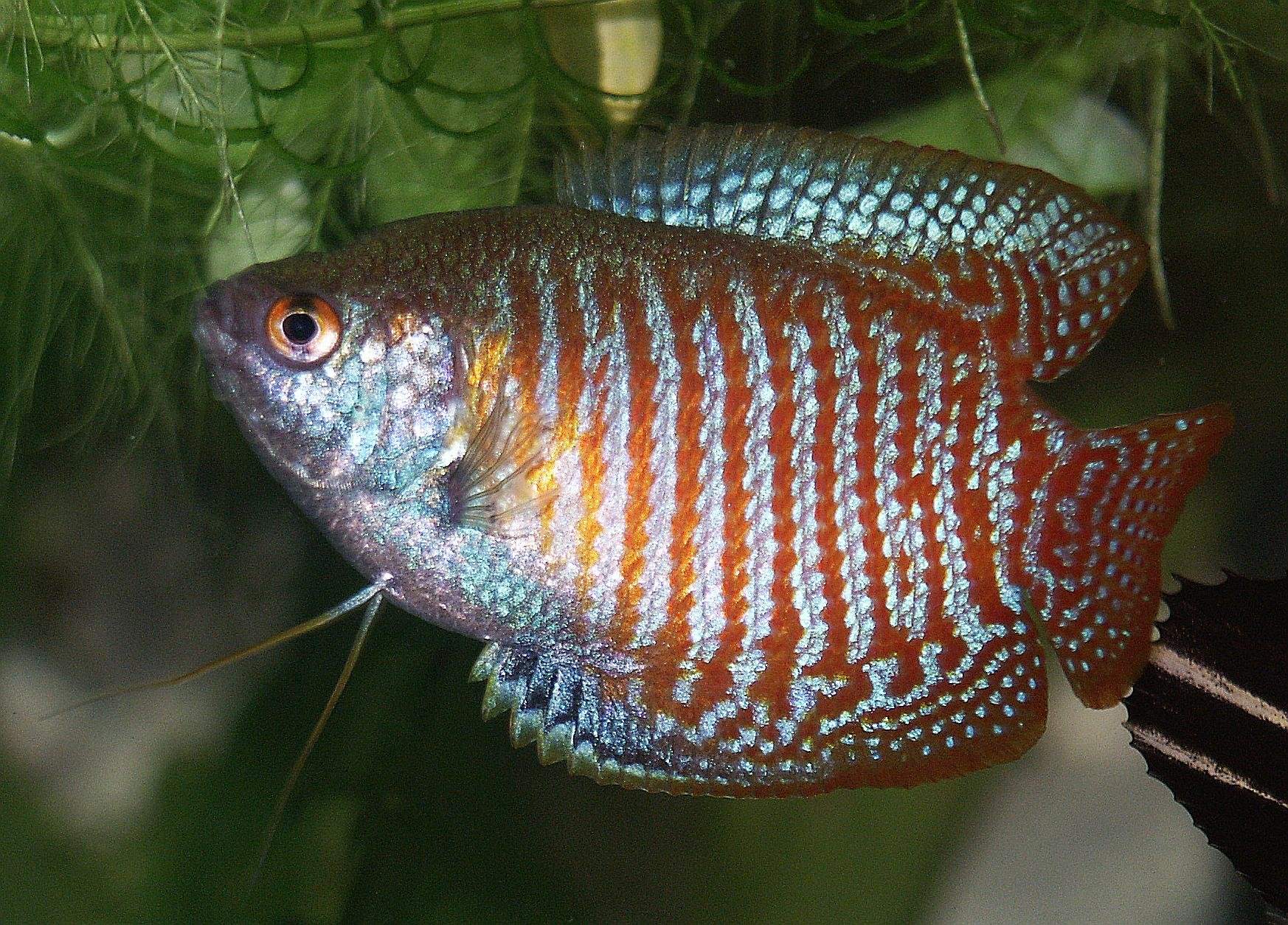
The Dwarf gourami is a beautiful and vibrant freshwater fish that’s easily recognizable. They have a pearlescent white belly and a bright red, orange, or yellow body. This color is separated by a black horizontal stripe that starts at the gills and goes all the way to the base of the tail.
The fins on a Dwarf gourami are very striking. The dorsal fin is tall and pointy and starts about halfway back on the body. The back half of the fin is black, and the front half is the same color as the body.
The anal fin is much shorter and not as tall as the dorsal fin. It has a similar coloration with a black back half and a colored front half.
The caudal fin is forked and symmetrical. It’s the same color as the body of the fish with a black band near the base.
The pectoral fins are tall and thin and start low on the body. They’re mostly clear with a black band near the base.
The ventral fins are long and thin and start a little bit below the pectoral fins. They’re the same color as the body of the fish.
Dwarf gouramis have a very expressive face. They have large eyes that sit on top of their head. They also have a long and thin mouth that curves downward.
Lifespan
The average lifespan of a dwarf gourami is 3 to 5 years. However, there are a number of factors that can impact a dwarf gourami’s lifespan, both positively and negatively.
For example, if a dwarf gourami is kept in a tank that’s too small, it will likely have a shortened lifespan. The same goes for a tank with poor water quality.
On the other hand, if a dwarf gourami is kept in a large tank with high-quality water, it will probably live closer to the 5-year mark.
Size
A Dwarf gourami typically grows to be about 2.5 inches in length, but some specimens have been known to reach 3 inches. Females are typically a bit smaller than males.
Tank
Tank Size
The minimum recommended tank size for a dwarf gourami is 20 gallons. If you’re looking for a smaller gourami species, this is a good choice. They are a peaceful fish but can be territorial with their own kind so it’s best to keep them in pairs or groups.
Water Parameters
The ideal water parameters for a dwarf gourami are as follows:
- Water temperature: 74 to 82 degrees Fahrenheit
- pH levels: 6.0 to 7.8
- Water hardness: 5 to 15 dGH
- Alkalinity Levels: 4 to 8 dKH
What To Put In Their Tank
Dwarf gouramis are a peaceful species that do best in a planted aquarium.
When it comes to the plants you can use pretty much anything that’s available. Hornwort, Java fern, and Anacharis are all great choices.
We recommend using a dark substrate to contrast the plants and make them stand out more. This will also help your gouramis feel more comfortable since they like to spend time near the bottom of the tank.
As for other decorations, you can use things like driftwood and rocks. Just be sure that the driftwood isn’t too big and that the rocks don’t have any sharp edges.
Common Diseases
Dwarf gouramis are actually quite hardy fish. They’re not as fragile as some other species, and they can usually withstand a fair amount of abuse.
That being said, they’re still fish. They need clean water and a good environment to stay healthy and happy.
The most common disease that affects dwarf gouramis is ich. This is a parasitic infection that will show itself as white spots on the body, fins, and gills of your fish.
If left untreated, ich can be deadly. However, it’s relatively easy to treat if you catch it early.
Another disease to look out for is fin rot. This is an infection that will cause the fins of your fish to become ragged and torn. It’s usually the result of poor water quality or an injury.
Fin rot is relatively easy to treat, but it can be deadly if left unchecked.
The best way to prevent these diseases is to simply take good care of your dwarf gouramis. Provide them with clean water and a good habitat, and they should stay healthy and happy for many years to come.
Behavior & Temperament
The dwarf gourami is a semi-aggressive fish that is known to be a fin nipper. They are also known to be very territorial, and will fight with other dwarf gouramis for dominance. In a community tank, they should be the only gourami.
Dwarf gouramis are also known to be relatively shy, so it is best to keep them in a tank with plenty of hiding places. They are known to be peaceful with other fish, as long as those fish are not the same species.
Tank Mates
Choosing the right tank mates for a dwarf gourami isn’t as simple as it might seem at first.
While these fish are peaceful by nature, they have a few special requirements that can make compatibility tricky.
First, dwarf gouramis are relatively small. This means that they can easily become lunch for larger, more aggressive fish.
Secondly, these fish are labyrinth fish. This means that they have a special organ that allows them to breathe air directly from the surface.
For this reason, it’s important to have some open space at the top of the tank. This is where the dwarf gourami will go to get its fill of oxygen.
Third, dwarf gouramis are known to be fin nippers. This isn’t necessarily intentional, but their long fins can get tangled up with other fish. As a result, they might end up taking a chunk out of another fish’s fins.
While these requirements might seem like a lot, there are actually plenty of compatible tank mates for dwarf gouramis.
Some good options include:
- Neon Tetras
- Cherry Shrimp
- Ghost Shrimp
- Amano Shrimp
- Dwarf Corydoras
- Otocinclus Catfish
- Harlequin Rasboras
- Kuhli Loach
Breeding
To breed Dwarf gouramis, start by setting up a breeding tank that’s at least 10 gallons. The water should be between 78-80 degrees Fahrenheit and have a neutral pH. Then, add some live plants and floating moss for the fry to hide in.
Next, add 1 male and 2-3 females to the tank. The male will build a bubble nest at the surface of the water, and the female will lay her eggs in it. Once the eggs are fertilized, the male will guard them until they hatch.
After the fry have hatched, remove the adults from the tank and start feeding them baby brine shrimp. As they grow, you can transition them to chopped up live foods and flakes.
Conclusion
Dwarf gouramis are a great addition to any freshwater aquarium. They’re relatively easy to care for and are very peaceful fish.
They’re also very colorful, which makes them a great addition to any tank.
If you’re looking for a fish that is low-maintenance and will add some beauty to your aquarium, the dwarf gourami is a great choice!

